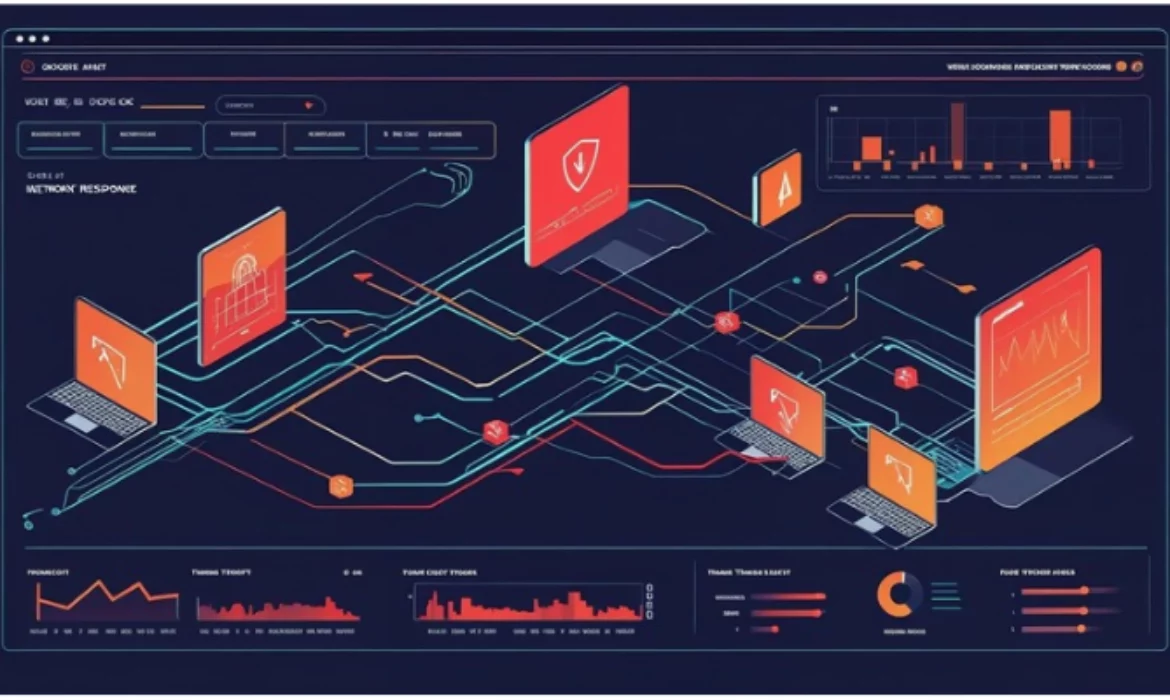E-time | the software company
How to Manage a Security Incident
The management of a cybersecurity incident begins with the identification of anomalous activities, continues with the analysis and containment of the event, and ends with the restoration of the compromised functionalities, accompanied by the implementation of actions aimed at the continuous improvement of security.
- Timely threat detection
The organization must have tools and procedures that are always active to promptly detect any signs of compromise, such as abnormal system behavior, unauthorized access, or suspicious malfunctions. - Incident analysis and assessment
Once a potentially suspicious event is intercepted, it is essential to analyze it to determine whether it is actually a security incident. The goal is to distinguish between false alarms and real threats that require an immediate response. - Containment and management actions
In the event of incident confirmation, containment measures must be promptly implemented to limit damage and prevent the issue from spreading to other systems or services. - Operational restoration
Once the emergency phase is over, the compromised functionalities are restored, ensuring that the systems are once again operational and secure. The incident is then formally closed, accompanied by detailed documentation of the activities carried out. - Review and continuous optimization
Following the closure of the incident, it is essential to conduct a retrospective analysis to draw useful lessons. Relevant information is shared with the interested parties, procedures are updated, and personnel are made aware, in order to strengthen the organization’s resilience and prevent similar events in the future.
What is an Incident Response Plan
To manage these phases in an optimized and effective way, it is useful to have a structured incident response plan that defines roles, responsibilities, and clear procedures to follow in case of emergency.
The Incident Response Plan is a strategic and operational document that defines the methods and procedures by which an organization must address cybersecurity events. It is designed to ensure a rapid and effective reaction to threats such as hacker attacks, data leaks, or system compromises.
The ability to respond promptly to incidents plays a crucial role in limiting damage and quickly restoring operational continuity.
The main goal of incident response is to identify, manage, and resolve security events, minimizing their impact on company data and operations.
Incident Management According to the NIS 2 Directive
Increasingly strict regulations, such as the NIS2 Directive, require organizations not only to implement formal procedures and internal guidelines for the management of security incidents, but also to promptly report any breaches to the competent authorities.
Among the obligations set out by the NIS2 Directive, a key requirement is the obligation to notify security incidents to the competent authorities, by sending a preliminary alert to the CSIRT (Computer Security Incident Response Team) within 24 hours of detecting the event, followed by the official notification within 72 hours of the occurrence of the cybersecurity incident.
Security Incident Management with Rexguard
Rexguard is an advanced platform that enables centralized management of incident response, vulnerabilities, non-conformities, and audits within a single integrated system. Thanks to automated workflows, the platform allows for rapid intervention on incidents, simplifying every phase of the event lifecycle, from initial detection to formal closure.
In this way, Rexguard not only accelerates the detection and resolution of incidents, but also supports compliance with regulatory standards such as NIS2, ISO 27001, and DORA, ensuring complete traceability, detailed audit trails, and comprehensive reporting.








